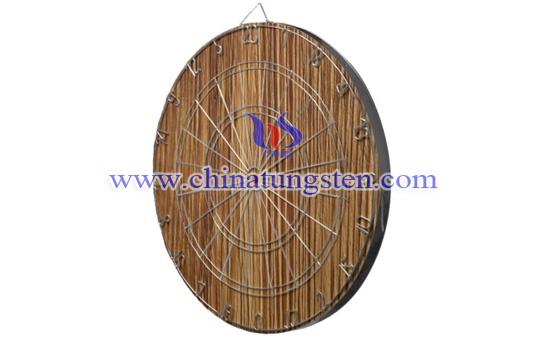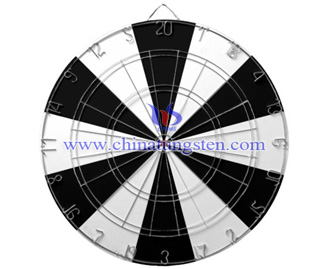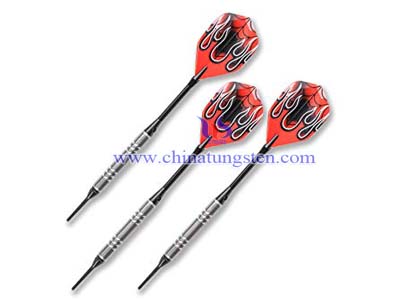A dartboard is the target for the game of darts, in the same vein as the round bullseye target used in archery. It is believed that warriors during the Middle Ages would take turns throwing short spears at overturned barrels or round targets formed from a tree's cross section. This improvised game would later be refined for indoor use by creating small darts and a standardized wooden dartboard.
The following is another version of where the dartboard originated from.One popular theory of the origin of the dartboard was a keg of a turned on its side. On the bottom of the keg were three concentric circles.
(1) if it landed in the inner circle, giving us the modern day triple
(2) if it landed in the middle circle giving us the modern day double
(3) if it landed in the outer circle
A traditional dart board used with sharp steel-tipped darts can be constructed from soft wood, cork or even compressed paper. The dartboard used in modern electronic dart games is often constructed from a plastic material perforated with holes. Soft-tipped darts are used to protect the dart board from damage. The material used in a dart board rarely affects playing strategy, but some darts may not penetrate a wooden dart board as easily as a cork one.
As time passed, more and more dartboards were developed, for example: the Manchester board has no triples but has two bull's-eyes. The most commonly used is that London board. This is the board used in national and international tournaments, and this is the board from which the games in this book have been devised.
The standard London board is 45.7 cm across 18 inches and the scoring area from the outermost ring (double to double) is 21 cm in diameter or 8.25 inches; the inner bull is a circle 1.3 cm in diameter or .05 inches and the outer bull is a circle of 3.2 cm in diameter or 1.25 inches; normal scoring for inner bull is 50, and for an outer of bull 25.
The number 20 is black and stands at the top of the board. The distance from the centre of the inner bull vertically to the floor is 1.73 m or 5'8". The distance at which the oche or hockey is set is 2.37 metres or 7 feet, 9.25 inches from the face of the dartboard.
A traditional dart board features the numbers 1-20 placed around the perimeter area in the following arrangement: (top) 20 - 1 - 18 - 4 - 13 - 6 - 10 - 15 - 2 - 17 - 3 - 19 - 7 - 16 - 8 - 11 - 14 - 9 - 12 - 5 No one is quite sure why this particular sequence was chosen, but some mathemeticians theorize that the distribution is 'flat', meaning it is random enough to prevent any point-rich regions.





